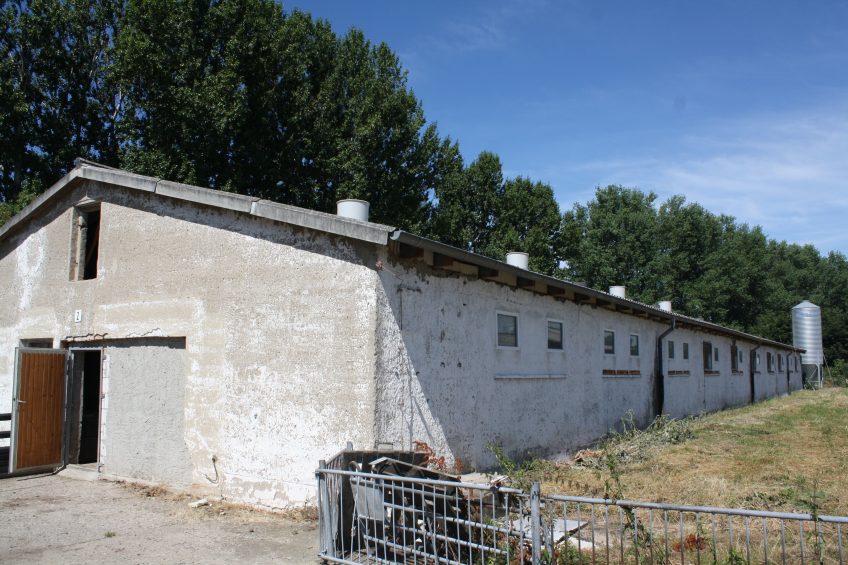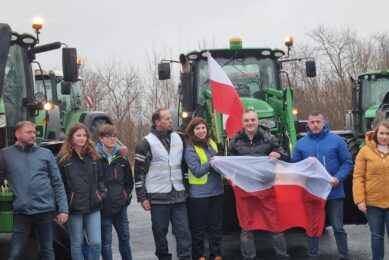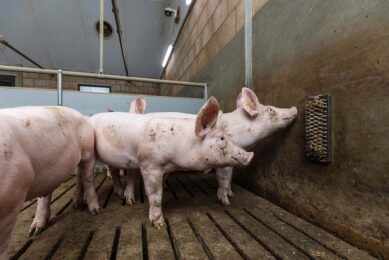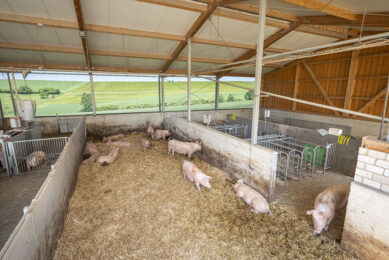Foreign investments successful in Eastern Germany

In pig production, East Germany still exists. Large, widespread multi-site farm complexes dominate the industry unlike anywhere else in the country. Pig Progress travelled into the German state of Saxony-Anhalt to learn more.
After the devastating years 1939-1945, and the following political division of Germany, West and East Germany both had their own way to rise from the ashes.
The development of swine production may serve as a good metaphor for what happened in both Germanies. In the capitalist West Germany, family farms became a constant factor. A huge concentration of middle-sized farms came into existence in the country’s North West, in the states of North Rhine Westphalia and Lower Saxony. In the communist East, a central government aimed to establish large state-run operations in various places throughout the country and in several places cooperatives were formed.
On the eve of the reunification in 1990, the general economic situation in Western Germany was strong and optimistic. Against this background, its pig production was thriving as well. In the East, the economic motor had stopped roaring for some while. Pig operations formed no exception, often underperforming if not abandoned or bankrupt.

Large sums of money had to be invested to revamp East Germany – total investments for the whole of East Germany are estimated to be at least €1.3 trillion. A small part of this amount must have been used to reorganise and revitalise the Eastern German pig industry.
Not without effect: In 2013, pig production is profitable in East Germany. It is, however, completely differently organised than in what used to be the West. Why and how?

General characteristics
East German swine production in 2013 is often located in the places where older state-run operations used to be located, explains Krijn Tanis, manager pigs at Van der Velde Agrar. Showing one of the company’s older breeding complexes near the village of Wasserleben, he explains: “Typical for Eastern German pig production are wide aisles and walking ways in the pig houses. Farms were relatively large and there was not a large deal of automation. Feeding used to occur by hand – it was trucked into the pig houses.”
He continues, “It was clear to see that money did not matter during management at the time. Everything was arranged by the authorities. The farms were usually characterised by numerous employees throughout the farm. Just after the reunification, there were 60 people working here, taking care of 1,000 sows. Now we have 1,470 sows and only seven members of staff!”

It’s just one of the many changes that happened over the years. Van der Velde Agrar is a Dutch-owned operation, headquartered in Tarthun, in the German state of Saxony-Anhalt, roughly 170 km to the east of Hanover. The agribusiness established itself in Eastern Germany in the year after the reunifcation with crop cultivation. Over the years, this business expanded to include a wide variety of crops, including not only corn, wheat, barley and rapeseed, but also grass, potatoes and onions. Cattle activities were added in the mid-nineties; a first pig farm was added to the business in 1999. Between then until 2008, five more pig sites were either acquired or built, until they formed a closed system in itself.
The six pig farms are all located in the area between Brunswick and Magdeburg. At the top of this system is a GP breeding facility, located near a town called Gehringsdorf, having 370 GP breeding stock. The farm produces Large White x Landrace breeding gilts, using genetic material from PIC Germany. As soon as the breeding animals leave the farm, they will be part of one of two output channels which are strictly separated for biosecurity reasons. Either they are transported to a breeding farm called Wormsdorf, having 2,000 sow places. This farm supplies grow-finisher pigs to two finisher sites called Groß Börnecke (capacity 10,000 pigs) and Seehausen (1,500).
The other channel – which is described in detail below – brings gilts to a breeding farm called Wasserleben. This farm has a capacity of 1,470 breeding places plus 450 places for gilts as from 25 kg. From here, the grower-finisher pigs are either further produced in Dalldorf (4,400 pig capacity) or they are sold externally.
Movement of pigs in the pyramid only goes downwards – no pigs re-enter the system at a higher level again.

Wasserleben
The Wasserleben facility, having wide walkways too in most of its 11 pig houses, used to be a cooperative under communist rule. The facility was built between 1975 and 1977 and on the outside, some remind the visitors of days gone by. On the inside however, modern management systems have replaced older equipment.
Tanis explains, “Inside, the buildings have been completely revamped. New climate control systems have been built in, alarm installations have been brought in for feed and ventilation, we totally stopped hormone treatments for oestrus synchronisation and have applied novel vaccination schemes. Even for the personnel things changed substantially as staff were rewarded after results, bonuses were introduced, just as additional education and occasional events for employees.”
Many describe the atmosphere on the company’s farms as ‘family-like’. As overall manager, Tanis created this by appointing one manager per site, and giving all a great deal of responsibility. He explains, “Decisions are not given top down. On the contrary – I greatly appreciate everyone’s input. This way we create a feeling of a common goal.”
Gilts and sows are inseminated with Piétrain semen, after which they are housed in groups, using Electroning Sow Feeding systems. Both during gestation and lactation, the breeding animals receive home-mixed feed, based on barley, wheat, corn, soy and mineral feed – but in different formulations depending on their requirements at that moment.

After weaning, one part of the piglets is sent off to the Dalldorf grow-finishing site (see below); another is first kept in a nursery at the Wasserleben site before going there. During the first two weeks, the piglets receive a complete feed, provided by German animal nutrition company Deutsche Tiernahrung Cremer (Deuka). In the next two weeks, the weaned piglets receive a mixture of home mixed ingredients. This includes home-grown grains, cooked grain, soybean meal, yeast and concentrates (Gelamin).
One problem Van der Velde Agrar had been coping with until recently in weaned pigs was ear necrosis. A novel addition to the Gelamin family of products, called FiberDigest, was successfully used to provide a helping hand in the reduction of it, explains Dr Heinrich Kleine Klausing, chief nutritionist at Deutsche Tiernahrung Cremer and managing director at Gelamin. Usually, ear necrosis is caused by endotoxins, released from the gastro-intestinal tract. By using the FiberDigest concept – a functional feed ingredient enhancing digestibility -– a pig in general is better capable of dealing with this situation, he explained. On one hand, the strategy leads to a better fermentation, in turn being a good energy source. On the other, the strategy also enhances the pig’s immune response as the growth of microvili is stimulated. The strategy had been used for several weeks and in general, the occurrence of ear necrosis went down over the weeks.
Noteworthy at the Wasserleben plant is a large, dome-size biogas plant. The facility can produce an energy of about 600 kW. The biogas plant mostly uses pig manure and a little bit corn silage. The energy is used to heat the pig house complexes in winter.

Dalldorf
As said, the other part of the weaned piglets is brought to the grow-finishing site of Dalldorf, immediately after weaning. In this facility, about 40 km east of Wasserleben, there is a capacity for 1,200 weaner pigs alongside 4,400 places for finisher pigs. Contrary to the Wasserleben site, this farm site is relatively modern, as it was built in 2003.
The farm complex, consisting of various long buildings, has several interesting features. One of them is the usage of the OptiSort, manufactured by German livestock equipment company Hölscher + Leuschner, an innovation that won the EuroTier Innovation award back in 2002. The equipment is able to closely estimate a pig’s weight by capturing its size on camera from above – after which sorting and targeted feeding for poor-doers can be possible. In the day-to-day practice of Van der Velde Agrar, the concept is mainly used for separation purposes prior to slaughter, Tanis explains.
The pigs in the Dalldorf site receive different diets, depending on in what building they are. In one additional farm building, just outside the main complex, the pigs receive dry feed, consisting of wheat, corn, barley, soy and minerals. In the most central barns, this same mixture is supplemented by water so that it is offered as a liquid mixture.
It is likely future pigs at Dalldorf will all get liquid feed, says Tanis. The pigs in Groß Börnecke already consume a mixture of whey, brewer’s yeast, starch and and an energy mixture containing e.g. fats and chocolate – and eventually all pigs at Dalldorf will get this too. Tanis explains: “The dry feeding systems were in this farm building when we purchased it – and it is too expensive to have it all converted into liquid feeding systems. We are currently planning to build new facilities for 7,000 finisher pigs here – and this will all become liquid feeding. By then the dry feeding building will no longer be used.”

Feed mill
Not far off the Van der Velde Agrar headquarters in Tarthun, an own feed mill is stationed. The facility was built between 1999 and 2000. The facility uses 15,000 tonnes of grains every year and a maximum of 3,800 tonnes of soybean meal. Total output is approximately 22,000 tonnes of feed every year.
Last but not least – originating from the Netherlands, Van der Velde Agrar is by far not the only foreign investor which helped turn a difficult industry into a profitable one. About 60% of pig farms in what used to be Eastern Germany is in the hands of foreign investors – the vast majority of them is Dutch, complemented with various Danish and Belgian investors.
Local German investments never really took off, Tanis says, “The people in Eastern Germany have been relatively conservative with spending their money, especially after 1989. Imagine that those who ran the farms never had to think about financial matters as the farms were state-run. So after the changes in 1989, a tractor was only purchased when sufficient amounts of money were saved in the bank.”
It’s a combination of opportunities and attitude that brought in the foreigners, Tanis concluded. “For instance the Dutch do business a different way – when investing, they wonder if it will generate payback for them in the long term. If it does, then why wait?”

This farm visit was made possible by Deutsche Tiernahrung Cremer.
 Beheer
Beheer








 WP Admin
WP Admin  Bewerk bericht
Bewerk bericht